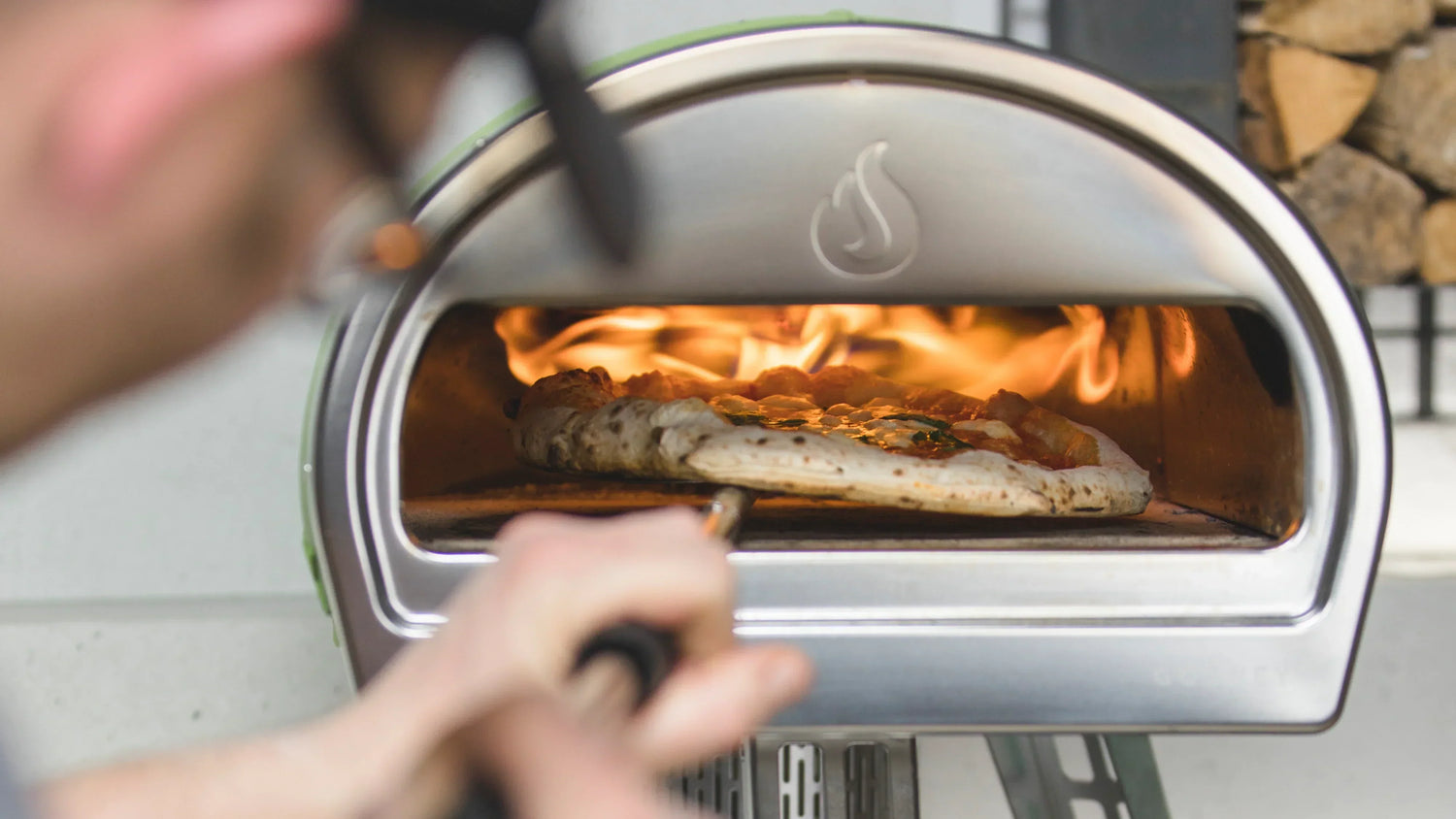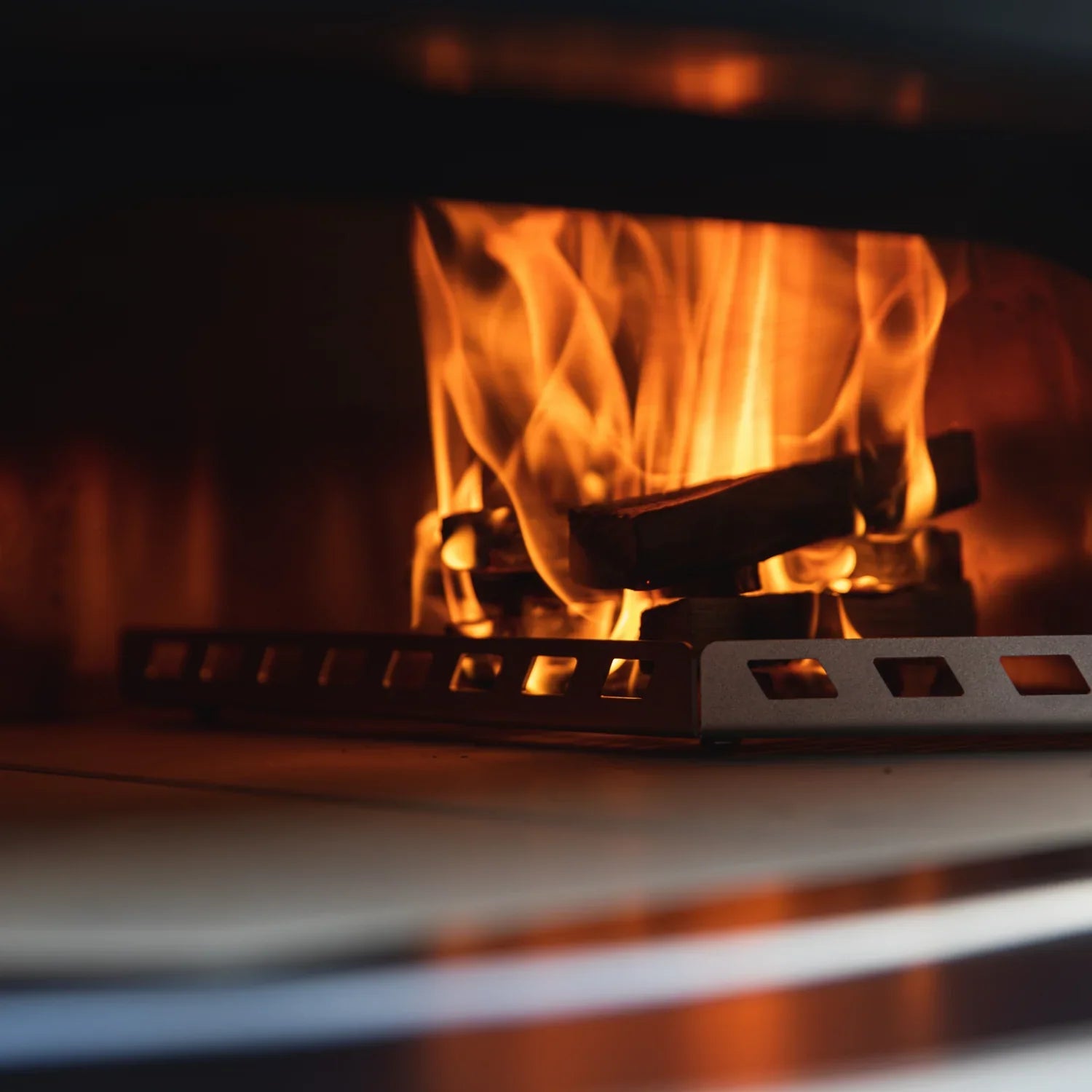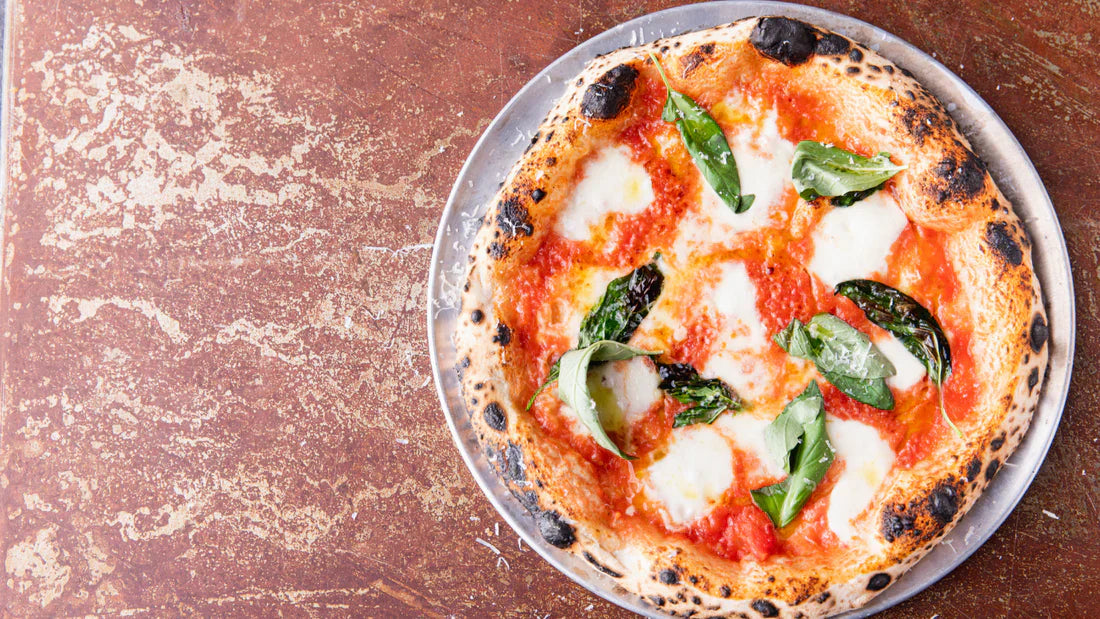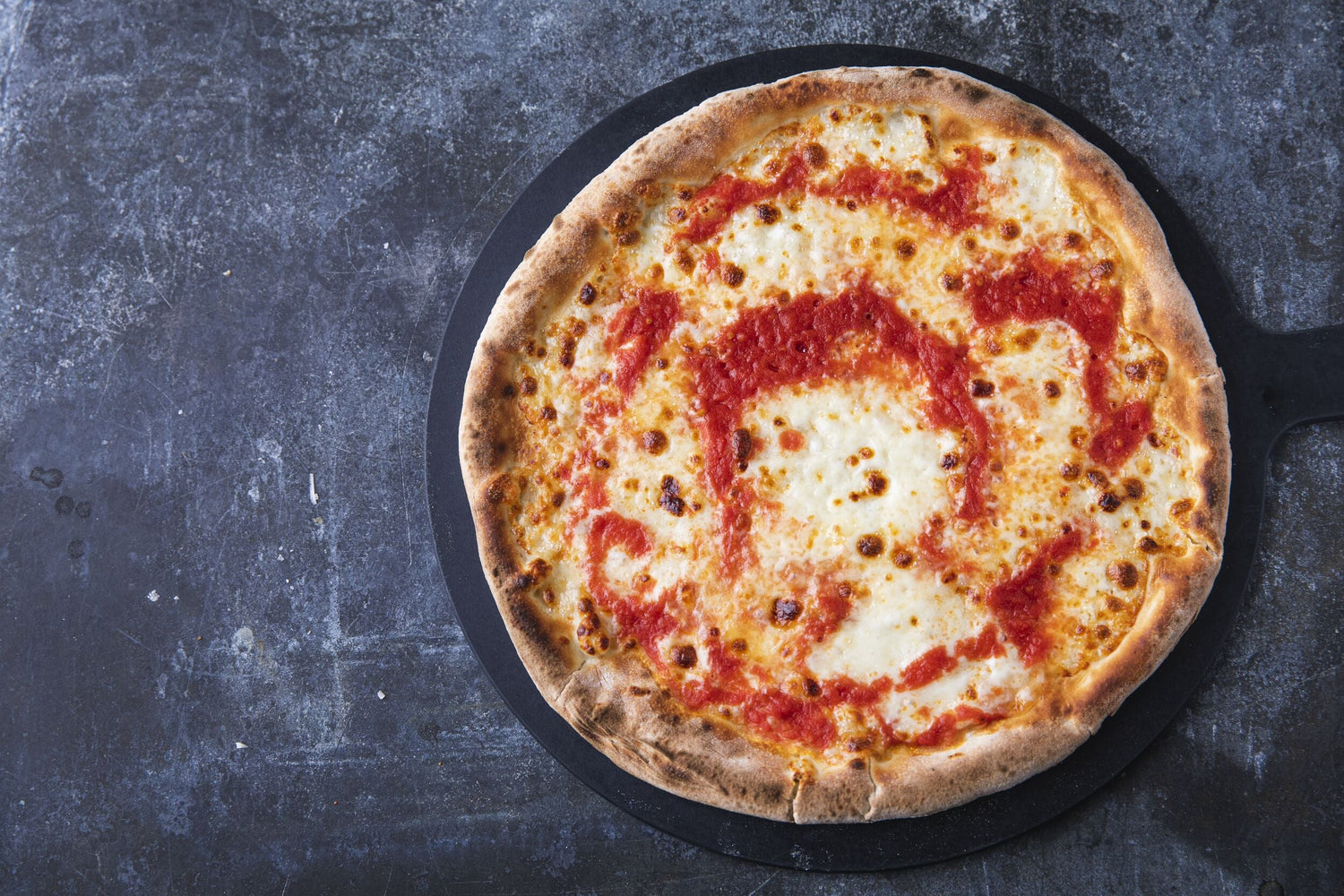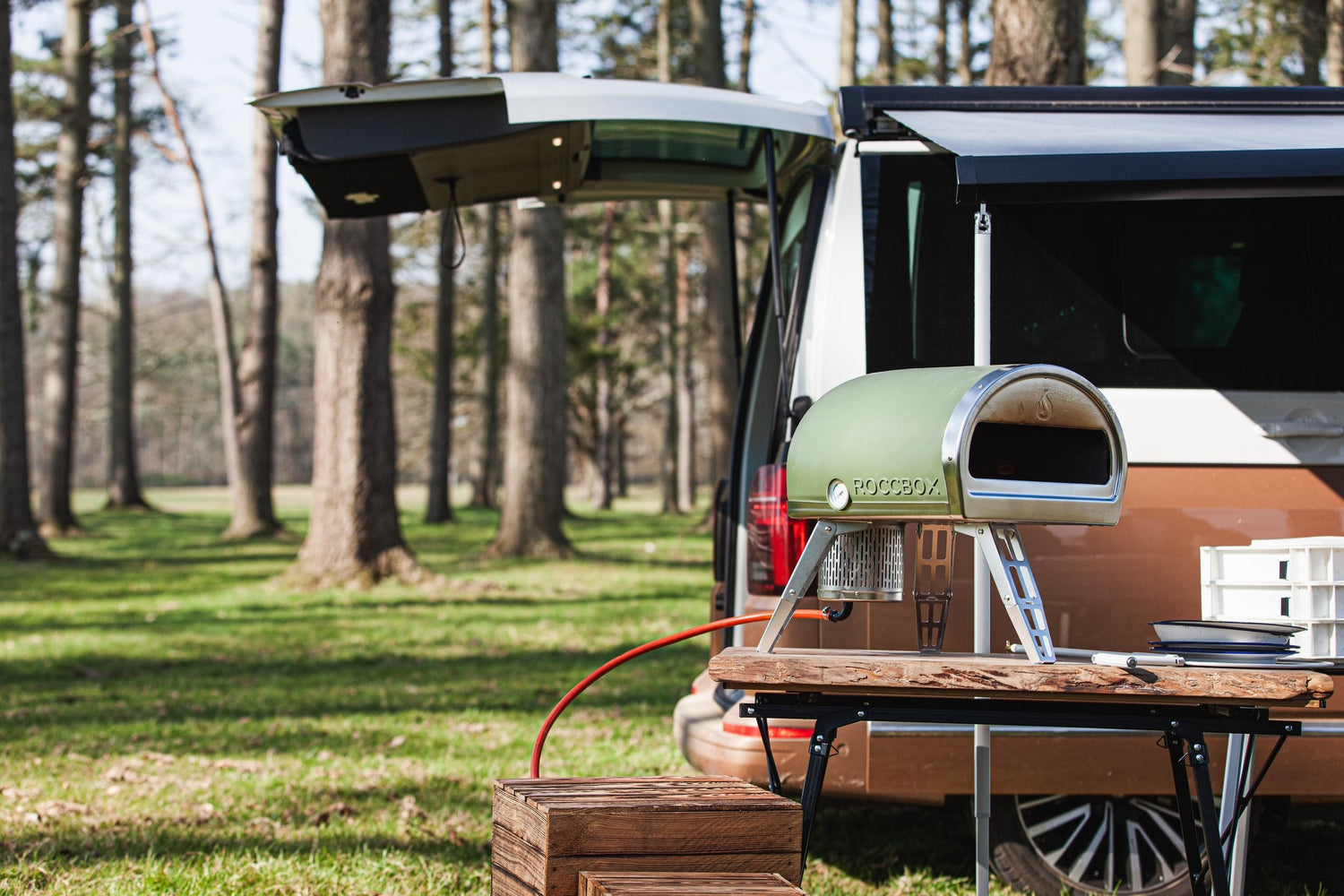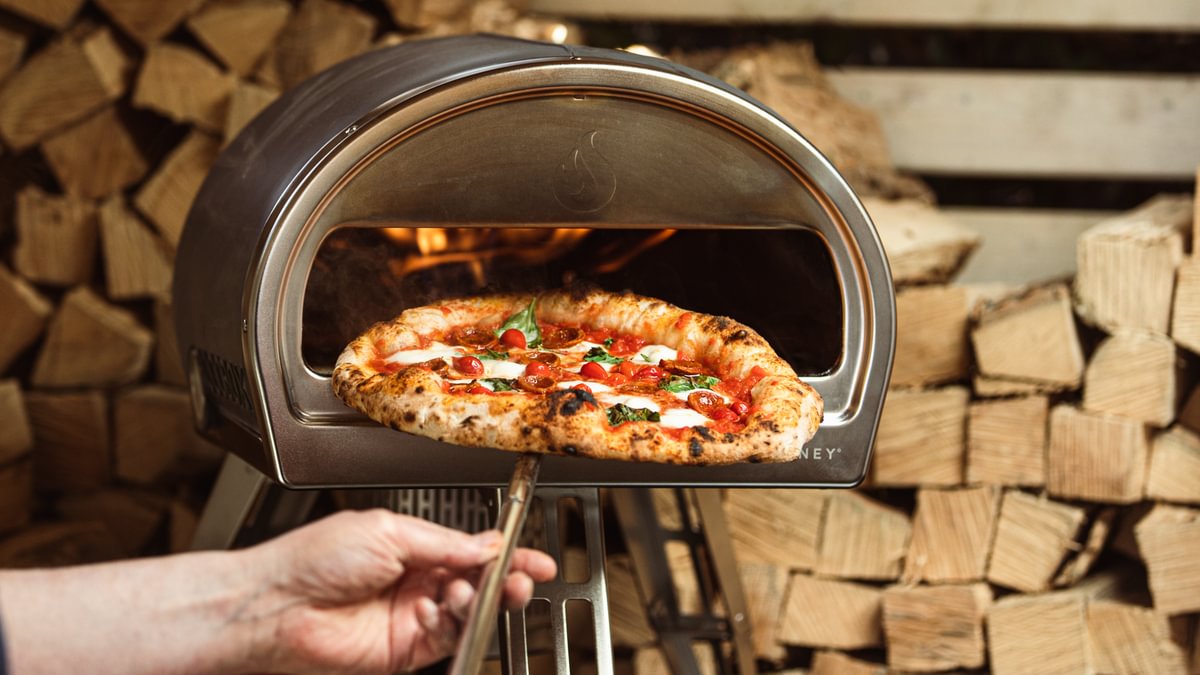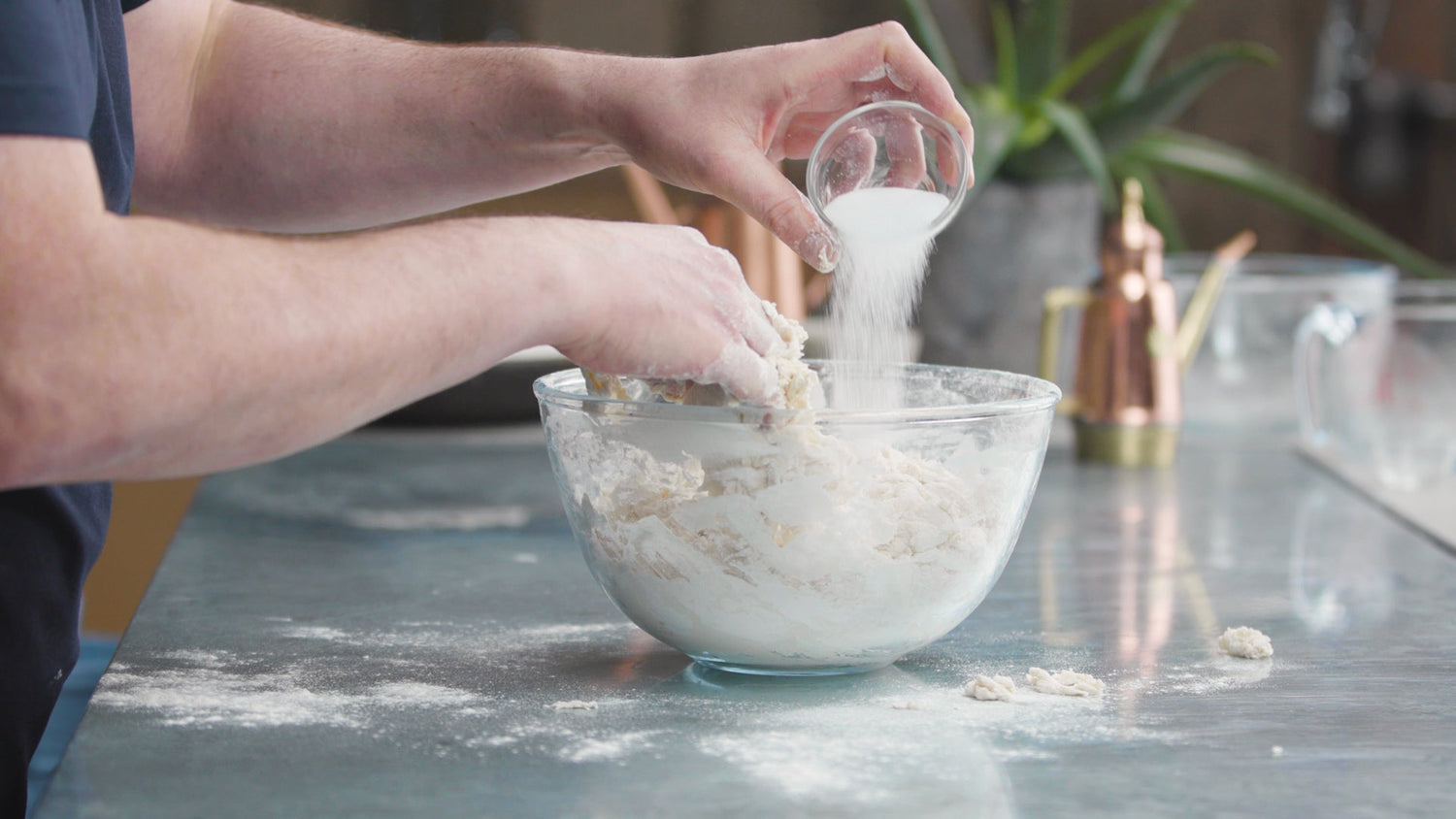You’re probably here as you’ve just got a beautiful outdoor pizza oven from Gozney - or are at least considering one - but don’t know what to do next. ‘I’ve got no idea how to make pizza from scratch?!’ I hear you cry! ‘How do I even make dough?! And what about sauce, how do I make that?!’. Before you reach for the phone in a panic and order take away in despair, you should probably read this blog from our resident dough expert, Joe Boiling.
Learning how to make pizza from scratch and making your own pizza dough may seem intimidating for some but it really needn’t be. It’s simpler than you think. And If the urge to fire up that pizza oven for the first time is just too much to contain and you just want to make pizza RIGHT NOW!!! Then you can check out this super simple pizza dough recipe and I'll bid you farewell.
In fact, here it is;
500g 00 Pizza Flour,
305g Water,
1.5g Yeast,
12g Salt
For those of you still reading I’m going to let you into a little secret, those readers that left to fire up the pizza oven and make pizza from scratch without reading the rest? They’ll be back. Because once you’ve tried making pizza from scratch that’s not the end. Oh no, you my friend are now a pizza maker! The future consists of non-pizza nights becoming a scarce rarity as you fling dough around your kitchen in search of the perfect pizza.
But let's not get ahead of ourselves.
We need to start at the start. You’re here to learn how to make pizza from scratch after all.
Essentials
I’m going to assume you have a Gozney pizza oven already but what else do you need to get started making pizza dough? Thankfully, not a lot. But like a good boy scout a good pizza maker should always be prepared and these would be our top 5 essentials to have on hand before making your first pizza.
Digital Scales
Exact ones. Making pizza dough is very much an art but there’s an element of science to the dough itself and ensuring exact measurements (in grams for exact precision!) will make sure your dough behaves how you want. Even just 10g of water either way will make quite the difference to your dough so weigh everything - including water!

Placement Peel
If you’re here as you’ve bought a Roccbox you’ve got the most amazing commercial grade pizza peel included already, if not, you can check out the Gozney pizza peels here. This is a positively essential tool as transferring your delicious carbohydrate cargo from the work surface to the oven is literally impossible without this bit of kit.

Turning Peel
Although not strictly ‘essential’ (you can bake an incredible pizza without one!) There's a reason all the pros use one. The turning peel makes it easier to keep the pizza in the pizza oven during cooking ensuring a beautiful even bake. You can check out how to use a turning peel here.

Bowls
You'll need something to weigh the ingredients out in and mix the dough in. Hopefully these will be something you have on hand already but you’ll want plenty. As well as holding dough during various stages of the pizza dough making process these guys will let you set up your toppings in close proximity to where you stretch your pizza base ensuring speedy topping and less mess.

Dough Trays
Normally, these are flat plastic trays with sides that can be sealed air tight. However, you can (and I regularly do!) just use any sort of tray you have in your kitchen that fits that description (baking trays, tupperware etc) and cover tightly with clingfilm. You’ll achieve the same end result but as you make more and more pizzas (remember, this is only the start!) you’ll probably want to look into a tray that you use solely for dough and pizza making.

How To Make Pizza Dough
The first Neapolitan margherita pizza was baked in a wood fired outdoor pizza oven in 1889 but as humans we’ve been making flatbreads of some description since 8000bc. You’ve probably got a distant relation somewhere that was an accomplished baker; so don’t be intimidated, it’s in your blood!
There’s no right or wrong way to make pizza. If what you make tastes good to you, you’re doing a great job! And not all pizzas are created equal. Once you’ve made your very first Neapolitan pizza from scratch you can then explore other styles of pizza; Thin & Crispy, Deep Dish Detroit, Classic New York, now you’re the proud owner of a pizza oven, all these incredible dough based delights are at your fingertips!
Our simple pizza dough recipe has just 5 ingredients in it - flour, water, salt, yeast and olive oil, and many recipes (particularly traditional Neapolitan ones that are governed by a strict set of rules by which pizzas bearing that name should be made by) omit the oil all together. Since there’s so few ingredients in pizza dough, pizza chefs will try and source the best ingredients they can for every aspect of their dough, particularly flour.

00 Pizza flour is finer milled, absorbent and has a high protein content (this is important as protein will become gluten, which will become stretchy, which will mean you can throw the dough above your head and impress your friends). Maybe you’re not quite ready to commit to a cupboard full of fancy italian flours, that’s cool, our simple dough recipe works well with all purpose or strong white bread flour that you’d find in the supermarket.
You’ll see fresh yeast used in a lot of pizza recipes but if that is a bit trickier to get hold of for you you can use dry yeast with brilliant results. If your recipe calls for fresh yeast simply use half the amount of dry yeast, or a third of the amount of instant dry yeast. If you’re feeling particularly adventurous you could even build a sourdough starter made up of naturally occurring wild yeast and make a sourdough pizza, but that’s probably a little way down the line right now.
How To Make Pizza Sauce
The passionate sourcing of ingredients doesn’t stop at flour. Most pizza sauces are simply the finest tinned peeled plum tomatoes you can find, delicately hand blended with a little salt. That’s it. San Marzanos are particularly favoured for Neapolitan pizza but do some taste tests and if it tastes good from the can, chances are it’ll taste great on pizza.

If this sounds a touch uninspiring (I promise, with good tomatoes it’s not) you can always add a little pizazz with a couple of basil leaves, or pinch of oregano before pulsing or even make a cooked tomato sauce (after all, this is your pizza and your journey) and not many are better than the one made with this Detroit style pizza here.
The Best Cheese For Pizza
The easy answer here is mozzarella cheese, but it gets a bit more nuanced as you delve into different pizza styles. Fior di latte is the ‘go to’ for Neapolitan pizza but low moisture mozzarella is favoured for a New York pie whereas a very specific Wisconsin Brick cheese is required to recreate the perfect deep dish Detroit.
As you begin, I’d advise trying whatever mozzarella you can get your hands on and if it’s wet, dry it on paper towel a little before topping your pizza as otherwise you may find your pizza base becomes too soggy which can lead to some unfortunate mishaps when launching the pizza into the pizza oven!

How to stretch pizza dough
There are as many ways to stretch pizza dough as there are pizza styles but one vital factor is allowing time for the pizza dough balls to sit at room temperature before attempting to open them into a pizza. When you ball the dough the gluten will get incredibly tight and you need to allow time for it to relax- otherwise your dough will just spring back on you as you try and open it. How long this period of time will be depends on a few factors (amount of water in your dough recipe, how warm is it where you are, etc) but is generally around 2-4 hours.
Once the gluten is relaxed and you’ve got a clean, flat, debris free surface to work on you’re ready to make your first pizza from scratch. Always toss the dough ball in some flour (or semolina, or a mix of the two) before beginning to open by hand.
You’ll notice that your dough ball will have puffed up somewhat and feel airy, what you’re trying to achieve with your hands is to move that air the edge to form a crust, this will naturally create a thinner round centre which will be your base.

At this point it should look like a very small pizza. To stretch it, you can lift the base up off the counter and it will naturally stretch. Pass the dough between your hands like a steering wheel keeping a watchful eye for any thin bits until required size. Place back on the workbench, gently reshape into a circle (it’ll be oval or the shape of Africa as you put it down) and you’re ready to top!
The best guides for how to stretch pizza dough are visual. Our 5 part Neapolitan pizza video has some great tips, as does this ‘How To Make Pizza From Scratch’ video with Peddling Pizzas, Adam Atkins. The trick is to watch as many pizza chefs online as you can and practice practice practice.
It’s been said that to become a master at something you have to do something 10,000 times and I know that sounds like a lot of pizza right now, but once you've made your very own pizza from scratch you’ll get closer to that number that you expect.
Baking The Pizza
With a pizza base opened (and possibly or possibly not thrown above your head) the next step is baking. Almost all pizza styles are cooked at much higher temperatures that can be achieved in a regular home oven. But as the proud owner of an outdoor pizza oven you can now hit those temperatures with ease!
Whether it’s the simple dough recipe or something more adventurous, whatever pizza you are about to bake there are a few key things to check every time you go to pull a constructed pizza onto the placement peel. In my experience, there are three key things to check. Is the peel; dry, cold and clean? Avoiding food debris on the peel as well as making sure it isn’t warm to the touch or wet at all will make your pizzas journey from peel to pizza oven much more likely to end in an awesome pizza, as opposed to an ‘Accidental Calzone!’

Once the pizza is safely in the pizza oven you can utilise the turning peel to spin the pizza on the hot stone floor of the pizza oven, tilting and lifting towards the flame at just the right moments - this will definitely need to be done over 10,000 times to become a master but the journey is more fun than the destination with pizza making.

Just like stretching dough (and every other stage) practice will improve your skills no end as you’ll develop a feel for the relationship between the fire and the dough. Every single pizza maker had to start somewhere so I hope reading this is just the beginning of your journey to pizza nirvana!


